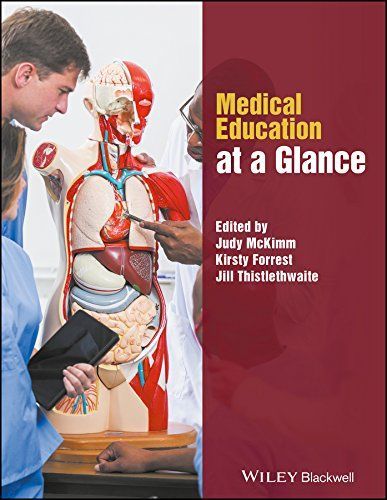
Medical Education at a Glance
Medical Education at a Glance -- Contents -- Preface -- Acknowledgements -- About the editors -- Contributors -- Part 1 Overview and broad concepts -- 1 What is medical education? -- 2 Stages of medical education -- 3 Evidence-guided education -- 4 Learning theories: paradigms and orientations -- 5 Learning theories and clinical practice -- 6 The curriculum -- 7 Planning and design -- 8 Equality, diversity and inclusivity -- 9 Principles of selection -- 10 Evaluation -- 11 Educational leadership -- 12 International perspectives -- Part 2 Medical education in practice -- 13 Large group teaching: planning and design -- 14 Large group teaching: delivery -- 15 Small group teaching: planning and design -- 16 Small group teaching: delivery -- 17 Clinical teaching: planning and design -- 18 Clinical teaching: delivery -- 19 Simulation: planning and design -- 20 Simulation: delivery -- 21 Patient involvement in education -- 22 Ward-based and bedside teaching -- 23 Learning and teaching in ambulatory settings -- 24 Teaching in the operating theatre -- 25 Interprofessional education -- 26 Reflective practice -- 27 Teaching clinical reasoning -- 28 Professionalism -- 29 Peer learning and teaching -- 30 Communication -- 31 Problem-based and case-based learning -- 32 Learner support -- 33 Supporting professional development activities -- 34 Mentoring and supervision -- 35 e-Learning -- 36 Social media -- Part 3 Assessment and feedback -- 37 Feedback -- 38 Principles of assessment -- 39 Written assessments -- 40 Assessment of clinical skills -- 41 Work-based assessment -- 42 Assessing professionalism -- 43 Portfolios -- 44 Setting pass marks -- 45 Developing yourself as a medical educator -- Further reading -- References -- Index -- EULA